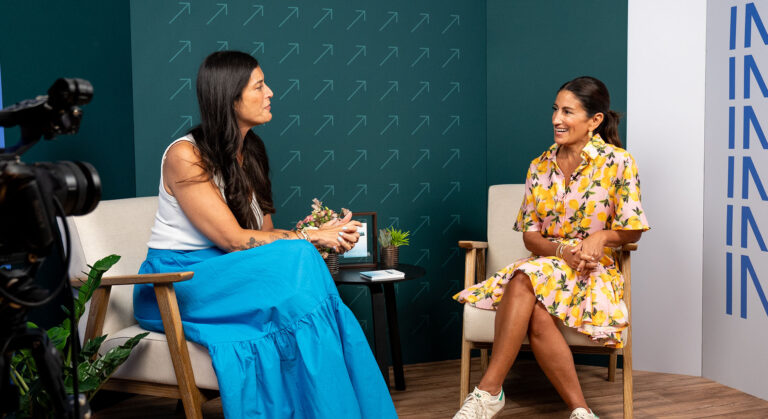Want more? Check out the Innovators Unscripted Bonus Round with Megan Pagliuca.
Omnicom Media Group’s Megan Pagliuca on innovating within live streaming TV
Welcome to Innovators Unscripted, a series where we share unfiltered insights from some of the most disruptive voices in today’s advertising ecosystem. Megan Pagliuca, chief product officer of Omnicom Media Group (OMG), joins for a conversation on how buyers should think about their programmatic buys within streaming TV.
The video transcript below has been lightly edited for clarity.
OMG was very early in adopting sell-side decisioning. What made you lean in and how are you seeing it unlock new value?
Megan Pagliuca: Omnicom Media Group has always had programmatic as a core competency—at least for the last 10 years since I’ve been there. You’ve seen so much evolution within the ability to really optimize supply paths and supply-side decisioning.
There’s first ensuring you have the most efficient supply path. Then, on supply-side decisioning with moving to a cookie-light ecosystem, having more data on the supply side, and the fact that the SSP is actually closer to the publisher, means getting more data signals. Incorporating those data signals as part of inventory curation just makes campaigns more effective and efficient.
How does partnering with Index and building on Index Marketplaces help you innovate for your clients?
MP: When we think of Index, we operate and have a direct seat on Index, where we can do inventory curation on behalf of our clients.
“The power of enabling agencies to not only have our hands on the keyboard within the DSP, but also be able to manage the levers within the supply side, is a powerful advancement.”
As viewers continue to shift from traditional TV to streaming, how is your approach to upfront buys evolving?
MP: This is a great question. There still has been too much video transacted within the upfronts that could be bought programmatically, but isn’t. That’s really been driven by what I think is the pricing of programmatic guaranteed (PG) from the DSP side.
Programmatic guaranteed is more similar to ad serving. It doesn’t have the decisioning of the rest of the DSP, but it’s a benefit because then you can manage frequency across the rest of your buy.
We now see PG pricing dropping significantly, which enables the move of those video dollars over. This is actually such an important advancement for brands and for consumers.
One challenge you still have, particularly in connected TV (CTV) since it was bought directly, is you don’t have appropriate frequency management.
When you’re watching CTV across channels and across apps, you have a serious over-frequency problem, which is wasteful for brands and annoying for consumers. It can actually create a concept of negative reach. It’s just waste.
“So with the dropping of programmatic guaranteed fees—which I think is important and appropriate because it should be closer to an ad-serving fee—it’s allowing our brands to move those dollars into programmatic.”
That will be more efficient and effective for brands, as well as create a better experience for consumers.
How are you working with your clients to drive more performant, efficient campaigns in today’s programmatic landscape?
MP: That’s a broad question—there’s a lot in there. One thing we’re excited to talk about today, and this week, is our big focus on innovating within live streaming.
When we think about live, first, there hasn’t been enough advancement in terms of data, technology, addressability, and measurability from an ad tech perspective. But then, from a consumer lens, what live is has changed.
In our research, we’ve found that, especially with Gen Z, they think about live more as what’s streaming on the social platforms than just a live event itself.
“Live is now about the conversation, and even the commerce, that happens during that live content.”
We’ve had a series of announcements throughout this week—over eight different partner announcements—where we’re really innovating, both in live sports with Disney, with Sky in the UK, and with Amazon on Thursday Night Football, and then with a number of partners on live streaming creators.
So, how do you identify those creators based on audience? How are you using that livestream content versus influencer content versus brand content in a smart way?
That’s an area where we’re really providing competitive advantage for our brands and broadening the scope and breadth around that core live content experience.
There’s a massive opportunity for sports and live streaming TV. In your view, what is it going to take for brands to make the most of it and reach these leaned-in audiences via programmatic?
MP: Perfect question, because this is where I really feel like we’re providing a competitive advantage for our brands. If I talk through the capabilities we’ve announced this week specific to live sports, for Amazon with Thursday Night Football, we’ve introduced a new capability where we can bring in customer lifetime value.
We actually look at the historic look-back of a consumer’s purchases over the two seasons that Thursday Night Football has been on Amazon. So now, we’re not just able to look at granular reach and frequency—which itself is of value—but then also sales, and not just sales, but historical lifetime value.
“It’s a huge shift from looking at GRPs and broad metrics to this granular reach, frequency, sales, and lifetime value.”
And then with Disney, we have ad podding available in the RTB spec, but it’s not used or deployed as well as it needs to be.
So we partnered with The Trade Desk and created a capability around better optimizing the ad pod for when a user first joins a livestream to able to reach that user and personalize that ad when they’re “user session frequency: one.” And then passing contextual signals around exciting cultural moments that happen in those live events.
What’s one piece of advice you’d give to marketers trying to get more from their programmatic strategies?
MP: Allocate more of your video dollars via PG deals so you can have that frequency management capability.
We’ve had similar best practices over time, but now it’s just applying them to video and CTV. Choose a primary DSP where you’re managing the majority of your buy so you get that benefit of frequency management and addressability.
One great example is within the Amazon DSP—we’ve brought in our omni viewership data, so we’re managing reach and frequency across linear, across all of the video buys, plus across Amazon Prime.
So it’s the same principles of programmatic that we’ve been talking about for the last 15 years, but inclusive of linear as well.
We break down all the complexities of streaming TV in our Index Explains video series. Tune in to learn how to make the most of your streaming investments.
Back to blog






